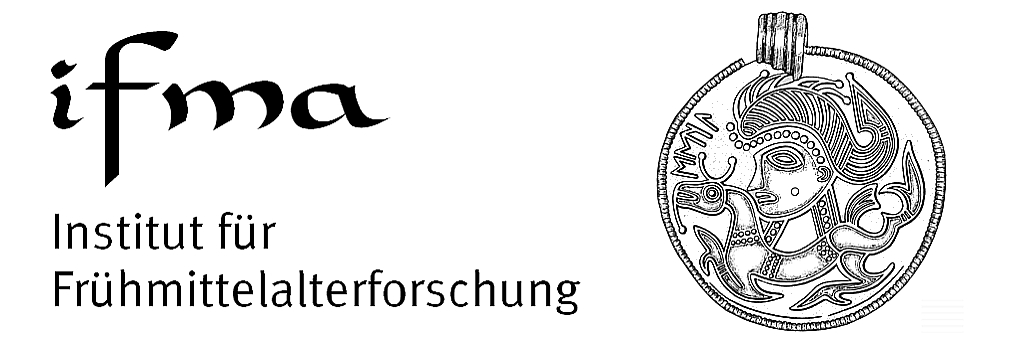
The Medieval Review 10.11.04
| Reviewed: | Constable, Giles The Abbey of Cluny: A Collection of Essays to Mark the Eleven-Hundredth Anniversary of its Foundation Vita Regularis Berlin: Lit Verlag, 2010 Pp. 586 54.90 EUR ISBN: 978-3-643-10777-0 |
| Reviewed by: | Constance Bouchard, Institute for Advanced Study, bouchard@ias.edu |
Giles Constable has been one of the world's chief authorities on the monastery of Cluny since his edition of the letters of Abbot Peter the Venerable appeared in 1967. He has written scores of articles and reviews on the topic, many of which have previously been collected in two volumes in the Variorum series (where articles are photographically reproduced, unaltered), [1] yet surprisingly he has never written a book-length study on the history of Cluny. Although this volume, intended to commemorate the monastery's foundation in 910, does not really repair that deficiency, it does make readily available more of Constable's work, especially that from the last decade.
This book consists of over thirty of his articles and reviews, four of which are here published for the first time. There is a good deal of overlap with the contents of the Variorum volumes; several of his more important articles from those volumes appear again here. He has made a conscientious effort to arrange his material so that it tells a more or less coherent, chronological story, from the Carolingian-era background of Cluny's foundation, to the monastery at the end of the twelfth century; as has always been the case, Constable is much more at home with the twelfth century than with the tenth or eleventh. The articles are essentially unrevised, except that he has substituted references to newer editions of primary sources and made occasional additions of newer secondary sources. But the volume still has, as he recognizes in the Preface, a fair amount of repetition and inconsistency, even contradiction, inevitable in pieces spanning a career of over fifty years.
While focused on a single monastery and primarily on a single century, the articles still manage to address the material from a number of angles. Constable's strength has always been his intimate knowledge of Cluny's sources; one of his new pieces, "The Dates on Early Cluniac Charters" (13-17), sets out to date a handful of early charters by comparisons with others in the monastery's very extensive archives. Other articles cover such varied topics as the historiography of Cluniac studies, the meaning of the term "reform," the influence of Cluny on Cîteaux--and vice versa--the connections of Cluny with the Crusades, liturgical observance, the internal life of the monastery, and Peter the Venerable as an administrator.
There is a fair amount of unevenness in the contribution the individual articles make. The most significant have, by and large, been reprinted before (and it does not seem that it would have been so hard to translate back into English the two originally published in Italian and reproduced here in that language). Some articles are extensive analyses, replete with footnotes to the primary sources. Others are no more than brief overviews, such as the three-page piece, "Cluny Before Cluny: The Carolingian Legacy," which begins the volume. The previously unpublished piece, "Cluny in the Twelfth Century: From Hugh I to Hugh V" (265-80), is essentially a straight narrative, mostly drawn (as Constable notes at the beginning) from previous articles.
Some of Constable's points about Cluny's history come out only through reprinted book reviews, whereas it would have been valuable to have his own interpretation of, for instance, the spread of Cluny's ordo through its daughter houses in the eleventh century. As it is, many insights here emerge only in reaction to the specific volumes being reviewed. In other cases Constable points to some significant aspect of Cluny's history but does not fully explore its implications.
For instance, one of the more potentially intriguing articles is one of the previously unpublished ones, "Cluny and Rome" (19-41). Constable points out that Rome had many meanings to the monks, as the home of the popes who granted them privileges and to whom alone they answered; as the earthly resting place of their patron saints Peter and Paul; and as a spiritual center, a new Jerusalem. Here Constable uses art as well as texts to show that the art and decoration of Cluny and some of its nearby dependencies (such as Berzé-la-Ville) mirrored some of the art of Rome. Rome could mean more than just Christian Rome, however, for the monastery's entry portal was modeled on the imperial Roman gate in nearby Autun. One wishes he could have done more than point out such similarities and had gone on for a fuller discussion of Cluny's efforts to define itself visually, as well as the flexibility of the very term "Rome."
Overall, this is a volume all research libraries will need to have, just as they need to have his Variorum collections (besides the two volumes on Cluny in that series, he has three more volumes on the broader history of medieval monasticism). It brings together a lifetime's work on Cluny, presently scattered among numerous journals, conference proceedings, and edited volumes. Just the index to the Cluniac documents he cites is very useful. But the book is frustrating because it could have been so much more. This is, after all, not a volume put together by Constable's students, but rather by someone who himself is still an active scholar. The previously unpublished piece "Cluny and Souvigny," now tucked away in the middle of the volume (213-34), a detailed analysis of Cluny's relations with one of its dependencies, indicates that even after fifty years he is not through with Cluny.
Note:
1. Giles Constable, Cluniac Studies (Aldershot, Eng.: Variorum, 1990); Cluny from the Tenth to the Twelfth Centuries (Aldershot, Eng.: Variorum, 2000).
The Medieval Review
The Medieval Institute, Western Michigan University
Distributor: Humanities Text Initiative


